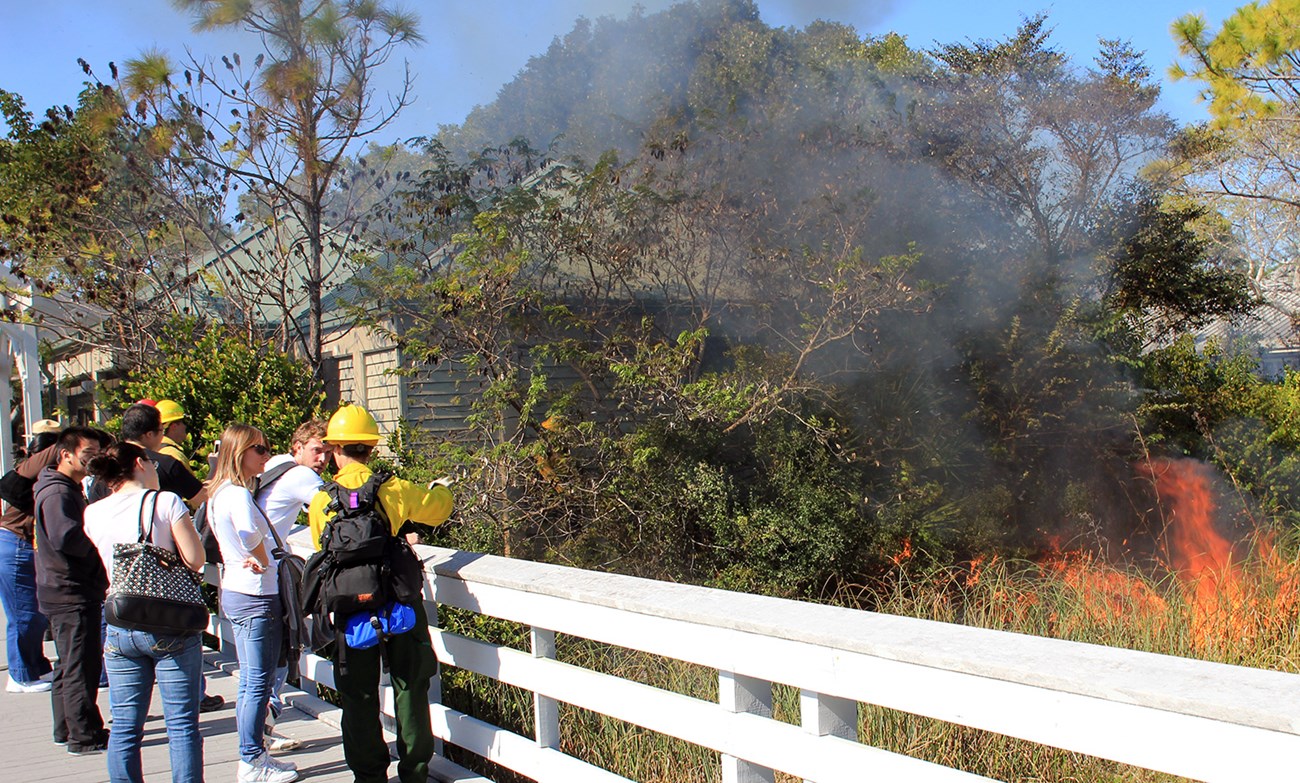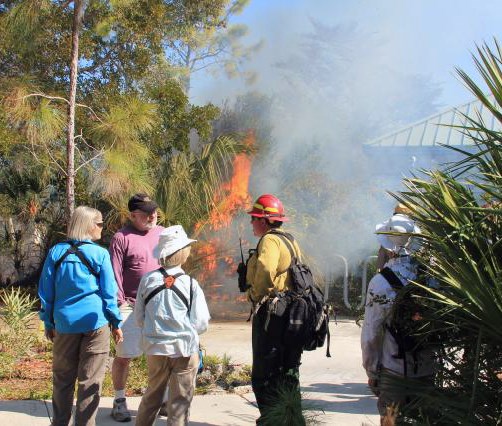Last updated: January 24, 2017
Article
Everglades Firefighters Use Prescribed Fire around Ernest Coe Visitor Center as Educational Opportunity

During the first week of January 2012, winter visitors enjoying the spectacular wildlife and natural beauty of the Everglades had the unique opportunity to get an up-close view of fire in the Everglades during the Headquarters prescribed fire treatment.
“We spoke with visitors from all over the United States and around the world.”—Katie Budzinski, Everglades public information officer
The objectives of the 6.5-acre fire were to reduce hazardous fuel accumulations near park administrative offices and the visitor center, maintain scenic viewsheds, and provide staff and visitors educational opportunities to learn about the Everglades fire-adapted ecosystem.
Because the Ernest Coe Visitor Center and Headquarters area is located at the entrance to Everglades National Park, the Headquarters prescribed fire treatment was the perfect opportunity for visitors to see that fire belongs in the Everglades.

In just six hours, approximately 1,000 visitors watched fire staff during firing operations, holding actions, and fire effects monitoring during the fire treatment. Visitors experienced the sights, sounds, and smells of fire in the Everglades as they traversed the burn unit on the boardwalk leading to the visitor center entrance.
Public information officers and interpretation staff were available to talk about the role of fire in the Everglades because the burn was being conducted in the peak of park visitation and in one of the most visited sections of the park. “We spoke with visitors from all over the United States and around the world, including visitors from Italy, Australia, Germany, France, New Zealand, Austria, Asia, Russia, and the United Kingdom,” said Public Information Officer Katie Budzinski. In addition, two groups of ecology students and professors from Austin College and the University of Buffalo took advantage of the prescribed fire to expand student knowledge of Everglades ecology.
Fire consumes decaying vegetation and releases nutrients that promote new growth, improves habitat, and increases food sources. Wax myrtle and saw palmetto--fire-adapted plants--are important to wildlife and survive and resprout after fire. Fire maintains species diversity, provides suitable food and habitat for plants and animals, controls exotic plants, and prevents encroachment of undesired plants.
As a management tool, this prescribed burn reduced hazardous fuels in the headquarters area and cut down the eventual risks of wildfire to life, property, and resources in the park. Because the headquarters area had not burned since 2007, the prescribed fire treatment reset the fire return interval for the area. Naturally occurring fires burn every 1-3 years in sawgrass prairies and every 3-7 years in pine rocklands ecosystems. The Headquarters prescribed fire treatment burned in a mosaic pattern, consuming dense, drier fuels while sparse, wetter fuels did not burn.
As a result of this burn, which reduced risks to park resources, visitors left with an understanding that fire is a common process that perpetuates the unique ecosystem of Everglades National Park.
Contact: Rick Anderson, fire management officer
Email: e-mail us
Phone: (305) 242-7835
